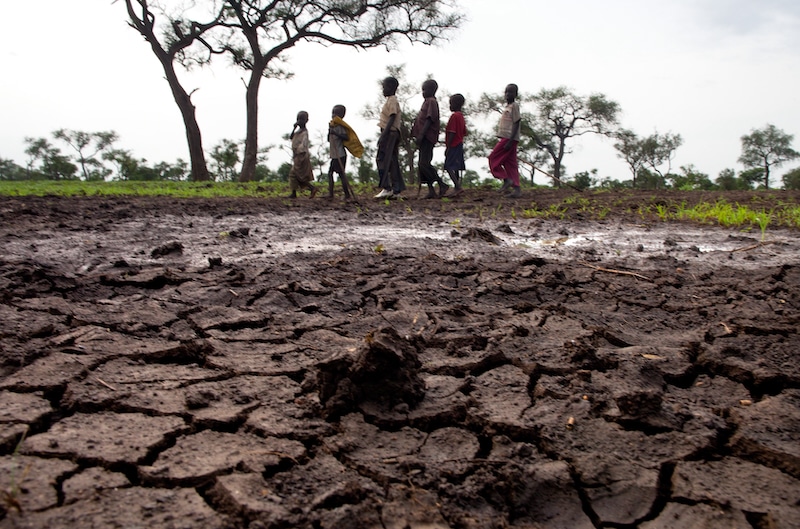This post was originally published on Eco Watch
Nearly half a billion children live in areas of the globe where there are twice as many or more “extremely hot days” each year than there were six decades ago, according to a new UNICEF analysis.
The report, A Threat to Progress: Confronting the effects of climate change on child health and well-being, found that 466 million children — one in five children in the world — are exposed to this unprecedented level of excessive heat.
“The hottest summer days now seem normal,” said Catherine Russell, executive director of UNICEF, in a press release from the international children’s organization. “Extreme heat is increasing, disrupting children’s health, well-being and daily routines.”
The researchers compared average temperatures in the 1960s to those from 2020 to 2024 — with extremely hot days being those that were more than 95 degrees Fahrenheit — and found that they had increased for nearly half a billion children around the world, many of whom did not have the services or infrastructure to cope.
The analysis looked at data by country and found that in 16 nations, children today are subjected to an additional month-plus of extremely hot days in comparison with six decades ago. In South Sudan, children have been exposed to an average of 165 of these extremely hot days annually this decade, compared with 110 days 60 years ago. In Paraguay, the number has risen from 36 to 71 days.
“Children are not little adults. Their bodies are far more vulnerable to extreme heat. Young bodies heat up faster, and cool down more slowly. Extreme heat is especially risky for babies due to their faster heart rate, so rising temperatures are even more alarming for children,” Russell said in the press release.
Worldwide, children in Central and West Africa are most exposed to extremely hot days, with the greatest temporal increases. For at least 95 days of the year, 123 million children in the region — 39 percent — suffer in extremely hot temperatures. In Sudan, that number is 195, in Niger it is 202 and in Mali children are exposed to 212 days of extreme heat.
Nearly 48 million children in the Caribbean and Latin America live in areas with twice the number of exceedingly hot days.
“This new Unicef analysis issues a stark warning about the speed and scale at which extremely hot days are affecting children. It urgently calls on governments to seize the precious opportunity to act and get temperature rises under control,” said David Knaute, a west and central Africa regional climate specialist with UNICEF, as The Guardian reported.
Knaute pointed out that the Sahel — a region to the south of the Sahara Desert that includes Sudan, Niger, Mali and Senegal — was so vulnerable because it is a transitional zone between Sahara’s arid climate and the more fertile environment south of the desert. This creates a natural intense heat source, with desert dust particles interfering with the climate.
Children and pregnant women face unique threats to their health and well-being from extreme heat exposure, especially if no cooling interventions are available. It can cause complications with pregnancy, including low birth weight, gestational chronic diseases, preterm birth and stillbirth.
Excessive heat stress can contribute to non-communicable diseases like heat-related illnesses, malnutrition in children and can make children more susceptible to infectious diseases like malaria and dengue that spread easily in high temperatures. Extreme heat also impacts mental health, neurodevelopment and overall wellbeing.

When extreme heat goes on for longer periods, its effects are compounded. Children in more than half of the 100 countries surveyed were found to experience twice the number of heat waves now than 60 years ago, and these extremely hot temperatures are increasing in every country around the world.
In the United States, 36 million children experience twice as many heat waves as 60 years ago, with 5.7 million experiencing three times as many.
“Governments must act to get rising temperatures under control, and there is a unique opportunity to do that right now. As governments are currently drafting their national climate action plans, they can do so with the ambition and knowledge that today’s children and future generations will have to live in the world they leave behind,” Russell said.

The post 466 Million Children Live in Parts of the World Where Extremely Hot Days Per Year Have Doubled: UNICEF Report appeared first on EcoWatch.





0 Comments